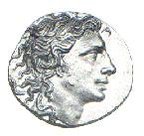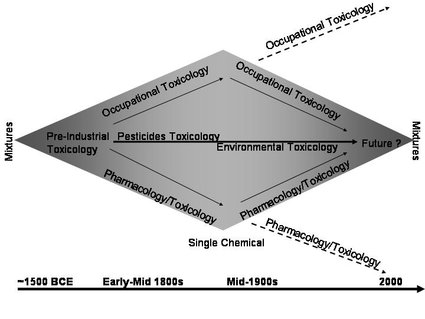History of toxicology
Contents
- 1 Introduction Although toxicology (History of toxicology) —as a formally recognized scientific discipline—is relatively new (with major developments in the mid-1900s), the science itself is thousands of years old. Consider the potential results of early trial and error experiences of hunter-gatherers for whom identifying a toxic plant or animal was a life or death situation. Some of the most poisonous substances known today are naturally produced chemicals including ricin from castor beans or tetrodotoxin from the puffer fish. Early humankinds’ careful observation of such plants or animals with toxic characteristics as frogs, containing curare, were put to use not only for avoidance of toxic substances but for weaponry as well. Many naturally-derived poisons were likely used for hunting, as medicinals (the Egyptians were aware of many such toxic substances as lead, opium and hemlock as early as 1500 BCE). Use extended eventually to political poisonings as practiced, for example, by the early Greeks and Romans. A silver coin depicting Mithridates. (Source: Livius.Org, with permission).
- 2 Pre-Industrial Toxicology
- 3 Toxicology and the Chemical and Industrial Revolution
- 4 Further Reading
Introduction Although toxicology (History of toxicology) —as a formally recognized scientific discipline—is relatively new (with major developments in the mid-1900s), the science itself is thousands of years old. Consider the potential results of early trial and error experiences of hunter-gatherers for whom identifying a toxic plant or animal was a life or death situation. Some of the most poisonous substances known today are naturally produced chemicals including ricin from castor beans or tetrodotoxin from the puffer fish. Early humankinds’ careful observation of such plants or animals with toxic characteristics as frogs, containing curare, were put to use not only for avoidance of toxic substances but for weaponry as well. Many naturally-derived poisons were likely used for hunting, as medicinals (the Egyptians were aware of many such toxic substances as lead, opium and hemlock as early as 1500 BCE). Use extended eventually to political poisonings as practiced, for example, by the early Greeks and Romans.  A silver coin depicting Mithridates. (Source: Livius.Org, with permission).
A silver coin depicting Mithridates. (Source: Livius.Org, with permission).
 A silver coin depicting Mithridates. (Source: Livius.Org, with permission).
A silver coin depicting Mithridates. (Source: Livius.Org, with permission). One of the more interesting stories resulting from a combination of both ancient history and current toxicological research, is the story of King Mithridates, king of Pontus (120-63 BC) who according to toxicology legend was so afraid that he might be a casualty of political poisoning, is said to have concocted a potion from a great number of herbs for his own consumption. It is believed he understood that by consuming small amounts of potential poisons, he might protect himself from any would-be poisoner. That is, he believed in the effectiveness of hormesis. Apparently, his plans worked so well that he gained a name for himself as one so mighty he could not be killed. Unfortunately, it is said that when circumstances were such that he desired to kill himself, he was unable to do so by ingesting poison and had to be run through by a sword instead.
Whether or not the story is true, it has led current day scientists to speculate upon the ingredients of his potion. It is believed that some herbs that he may have used, for example, St. Johns Wort could truly have contributed to detoxification of some other poisons. Recent studies have demonstrated that St. Johns Wort (often used as a herbal remedy) can increase the metabolism or breakdown of certain drugs and chemicals. This early story of toxicology relates a very important concept—that all animals have some kind of intrinsic ability for detoxifying a number of naturally-occurring toxicants in small doses (so that, in some cases low doses of chemicals may pass through the body without causing harm. From this we derive the concept of a chemical threshold), and that these processes can be altered by exposure to other chemicals (for example, the active chemicals in St. Johns Wort). The question remains as to how adept animals, including humans, are at detoxifying many of the newer industrial chemicals or mixtures of industrial or industrial and natural chemicals. Additionally, it is well known that in some cases, detoxification of chemicals can produce even more toxic compounds.
Pre-Industrial Toxicology
As humans sought to better understand natural compounds that were both beneficial and harmful to them, there was very little if any clear understanding of the fundamental chemical nature of substances. That is, there was no connection between the ‘extract’ or ‘essence’ of a poisonous plant or animal and any one particular chemical that might cause toxicity. In fact, an awareness of chemistry in its modern form did not occur until around the mid to late 1600s. So it is ironic that Paracelsus, a physician from the sixteenth century and one of the early “Fathers of Toxicology” had no clear understanding of chemistry as we know it today. He, along with many others of that time, likely believed that all matter was composed of three “primary bodies” (sulfur, salt, and mercury). Yet, Paracelsus also coined the now famous (or infamous) maxim of the newly emerging discipline of toxicology:
“All substances are poisons, there is none which is not a poison. The right dose differentiates a poison from a remedy.” (Paracelsus, 1493-1541)
This phrase and Paracelsus’ name are committed to memory by hundreds of new toxicology students each year and has become the ‘motto’ of toxicology. Interestingly, if one takes Paracelsus at face value, it appears that in this quote he was referring to substances which served as potential remedies but could be poisonous if taken in high enough concentrations. Most of us are aware of the fact that overdosing can turn remedies to poisons, even with such apparently innocuous drugs as aspirin and Tylenol.
Another branch on the toxicology family tree that developed in the sixteenth century, along with the study of drugs and the use of chemicals in hunting and warfare, was occupational toxicology. As humans learned how to remove and exploit such materials as coal, and metals and other minerals, occupational exposures to these chemical substances (and chemicals produced incidentally) resulted. Scientists eventually recognized the linkages among illnesses and exposures to these compounds. Some of the first reports of occupational illness, or diseases caused by activities related to specific occupations, can be found in literature from the mid- to late-1500s. Early occupational observations include the ill effects from lead mining and madness caused by mercury exposure (for example, the saying “mad as a hatter” was attributed to the common use of mercury in the hat felting process). Later, in the 1700s, Bernadino Ramazzini is credited with bringing to light diseases of tradesmen, including silicosis in stone workers and lead poisoning. In the late 1700s, Sir Percival Potts made one of the more famous observations in toxicology, linking an occupational exposure (in this case soot in chimney sweeps) to cancer of the scrotum.
At this point we have discussed the pre-Industrial Revolution developments in toxicology, that were primarily devoted to the study of such naturally-occurring toxicants as the polyaromatic compounds contained in soot and heavy metals, and such toxins as botulinum toxin produced by the bacterium Clostridum botulinus.
Toxicology and the Chemical and Industrial Revolution
The chemical/Industrial Revolution of the mid-19th century released many naturally-occurring chemicals into the environment in unprecedented amounts. Also, it produced and released new substances unlike any that had existed in the natural world. With the production and use of these chemicals, and the need to protect humans from the toxic effects of industrial chemicals, toxicology eventually evolved to include its modern day branches: pharmacology, pesticide toxicology, general toxicology, and occupational toxicology (Figure 1).
 Figure 1. Many fields in toxicology were focused early on, on single chemicals. Now many fields must address the impacts of chemical mixtures in addition to the effects of single chemicals.
Figure 1. Many fields in toxicology were focused early on, on single chemicals. Now many fields must address the impacts of chemical mixtures in addition to the effects of single chemicals. Towards the mid-late 20th century, environmental toxicology was developed to specifically address the effects on both humans and wildlife of chemicals released into the environment. A notable differences among the branches of toxicology is that pharmacology, pesticides and even occupational toxicology primarily have focused on the effects of relatively high concentrations of single chemicals. This compares to the relatively low concentrations of several different chemicals or chemical mixtures that are relevant to environmental toxicology.
The chemicals considered by the earlier branches of toxicology were, and are, a known quantity. That is, the research was designed to address questions about specific, well-characterized chemicals, exposure conditions, and even concentration ranges rather than complex chemical mixtures. For example, pharmacologists might work with a particular active ingredient (e.g., salicylic acid or aspirin), and be confident about the route of exposure (oral) and the concentration or dose. This is seldom the case in environmental toxicology, and hazardous waste assessment and cleanup in particular, where chemicals often are present in mixtures, routes of exposure may vary (for example, from oral to dermal to inhalation). Significantly, exposure concentrations prove difficult to determine.
Further Reading
- Borzelleca, J. 2001. The Art, the Science and the Seduction of Toxicology. An Evolutionary Development. In Principles and Methods of Toxicology. Hayes, A. ed. Taylor and Francis, London. 1-22. ISBN: 1560328142
- Vogel, G., 2001. How the Body’s ‘Garbage Disposal’ May Inactivate Drugs (News Focus). Science 291: 35-37.
- Ball, P. 1999. Life’s Matrix: A Biography of Water. Farrar, Straus and Giroux, NY, NY. ISBN: 0520230086